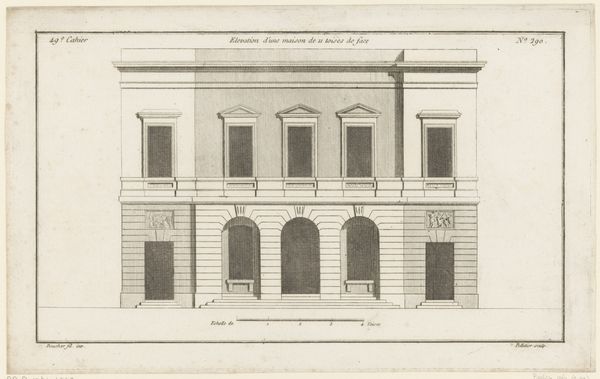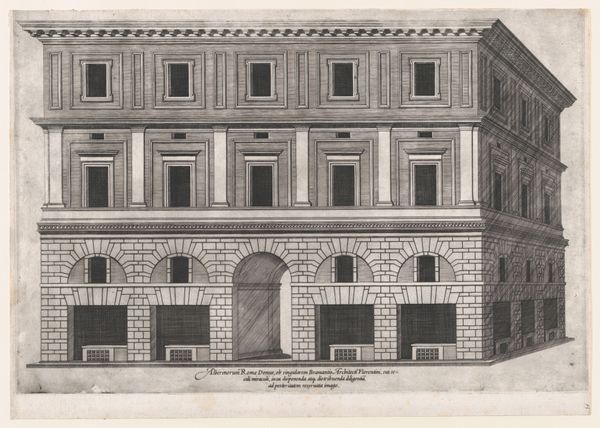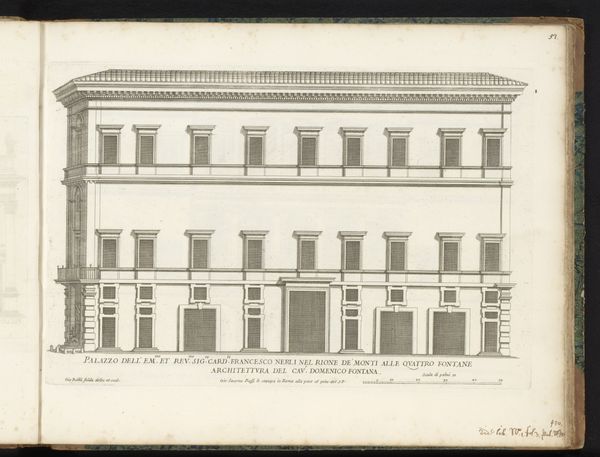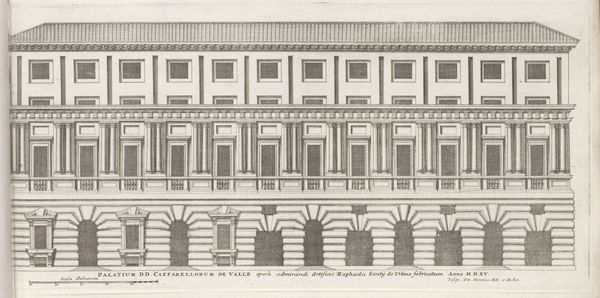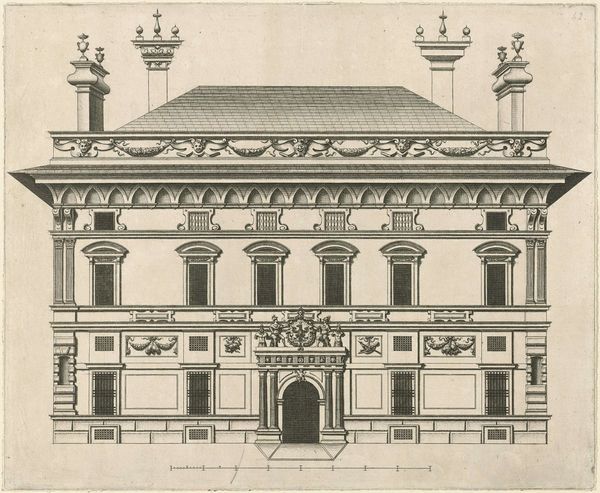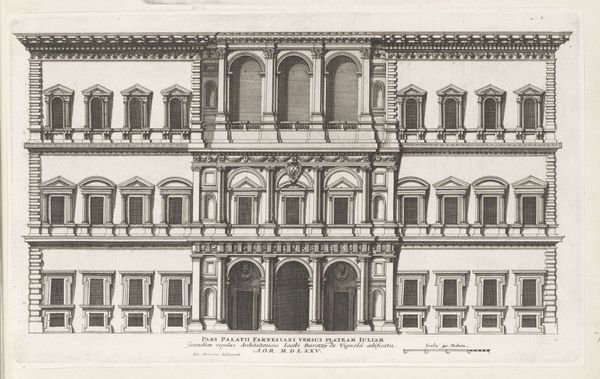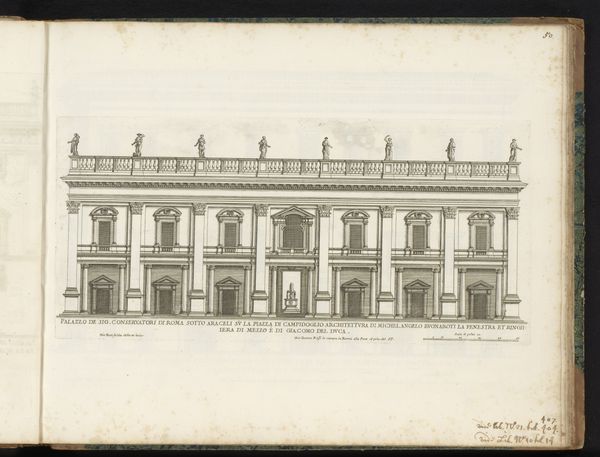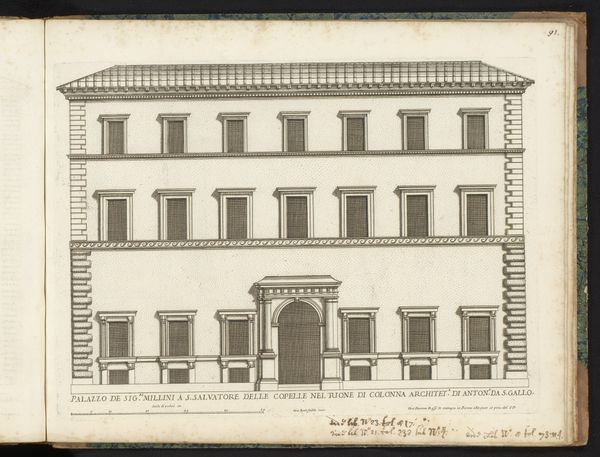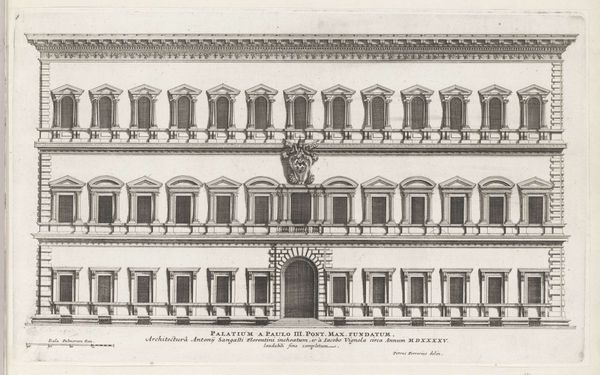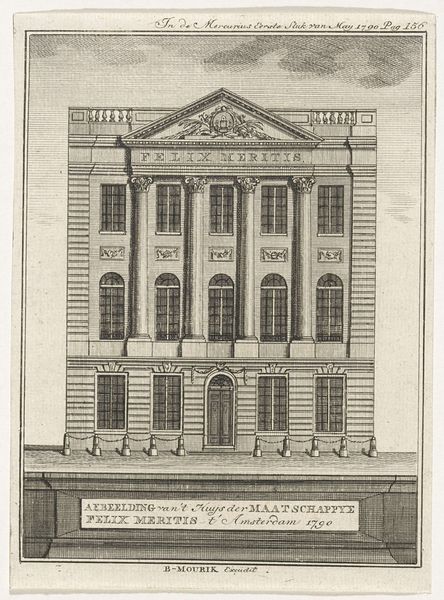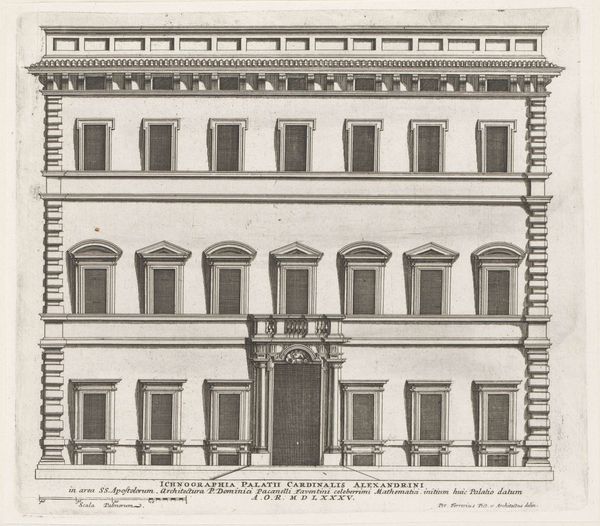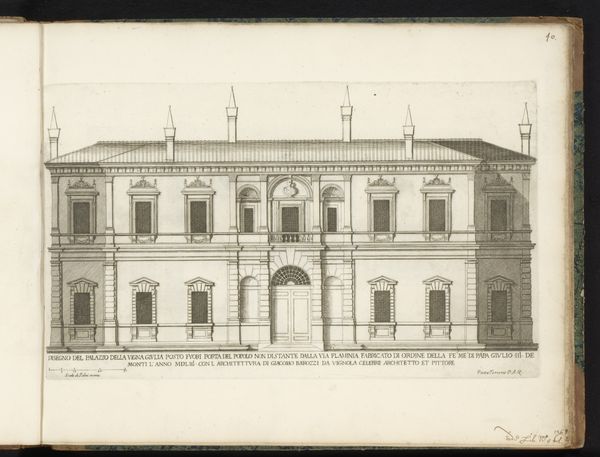
print, engraving, architecture
#
baroque
# print
#
cityscape
#
engraving
#
architecture
Dimensions: height 152 mm, width 223 mm
Copyright: Rijks Museum: Open Domain
Editor: This engraving, “Toegangspoort tot de wijngaard van paus Julius III," dating roughly between 1600 and 1750, shows the entrance to Pope Julius III’s vineyard. There’s a formality here, with the rigid symmetry of the architecture... it feels very much about power and order. What do you see in this piece? Curator: I'm immediately drawn to the architectural language being used. Think about the Roman vocabulary being deployed – the pilasters, the arches, the bust above the entrance… All of this consciously invokes the Roman Empire, associating papal authority with that imperial power. Do you notice how even the chimneys are adorned with wind vanes? Nothing is purely functional; everything is symbolic. Editor: Yes, the visual link to the Roman Empire is clear, now that you point it out. So it’s about creating an image of permanence, of power reaching back centuries? Curator: Precisely! It’s cultural memory made manifest. Power needs validation; and invoking the Roman Empire provides a kind of lineage and legitimacy. Even the act of documenting it as a print—a repeatable image—speaks to a desire to disseminate that message. Editor: The detail really is impressive, making that symbolism all the more striking. I hadn’t thought about how even architectural details could carry so much… weight. Curator: Buildings, just like myths and stories, hold embedded histories, and that can reveal the culture’s underlying ideologies and anxieties. Editor: This has given me a new perspective; I’m now seeing architecture as a kind of language, purposefully constructing and communicating messages of power. Curator: Exactly, and those messages continue to resonate even centuries later.
Comments
No comments
Be the first to comment and join the conversation on the ultimate creative platform.
